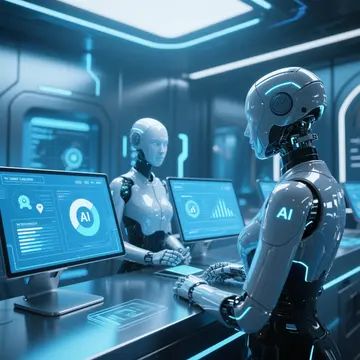Tired of manually converting mockups into functional front-end code? Discover how image to code AI apps are revolutionizing developer workflows. With cutting-edge AI image recognition and UI-to-HTML converters, you can turn static visuals into real-world code in seconds. In this guide, we explore the most reliable tools available today, and how they fit into your development pipeline.

What is Image to Code AI?
Image to code AI refers to artificial intelligence tools that can analyze visual content—like design mockups, wireframes, or screenshots—and generate source code, usually in HTML, CSS, or React. These tools bridge the gap between designers and developers, dramatically reducing the time and effort required to build user interfaces.
Thanks to advancements in computer vision and deep learning, these platforms can understand layout, color schemes, spacing, and even component behaviors, converting complex UI images into editable code. This form of AI-driven UI development is now becoming essential for modern teams.
Top Benefits of Using Image to Code AI Tools
? Speed: Generate front-end templates in seconds
?? Iteration: Easily test UI variations without manual coding
?? Collaboration: Designers and developers align faster
?? Accuracy: Maintains design consistency during handoff
?? Learning: Helpful for beginners learning UI layout and code structure
Best Image to Code AI Tools in 2025
?? Uizard
Uizard allows users to upload hand-drawn wireframes or screenshots and instantly convert them into editable design components and code snippets. Its intuitive interface makes it ideal for non-developers too.
?? Anima
Anima integrates with Figma, Adobe XD, and Sketch to turn visual designs into fully responsive HTML, React, or Vue code. It's perfect for design-to-code automation and supports responsive breakpoints.
?? Builder.io
Builder.io offers visual development and code generation powered by image to code AI. It allows real-time visual editing and collaboration, ideal for teams scaling up production workflows.
How Image to Code AI Integrates with Developer Workflows
Tools like image to code AI are not just for prototyping. Many offer export options compatible with modern front-end frameworks like React, Angular, and Vue. This ensures that the AI-generated output can be part of your actual product, not just a demo.
They can be integrated into CI/CD pipelines, used in low-code development platforms, or embedded in design systems to streamline interface updates.
Pro Tip:
Use Figma to code AI plugins like Locofy or Anima for real-time export of working components. These tools can even optimize images and styles for production-ready code.
Limitations of Image to Code AI (And How to Overcome Them)
While image to code AI tools have made massive strides, they aren't perfect. Here are a few challenges users may face:
? May misinterpret complex or abstract UI elements
? Accessibility and semantic structure might be lacking
? Some tools generate bloated or unoptimized code
To counter these, developers should always review the code output, apply optimization manually, and use the tools as accelerators—not final solutions.
Who Should Use Image to Code AI?
These tools are ideal for:
?? Front-end developers needing fast layout drafts
?? UI/UX designers looking to test interactivity
????? Freelancers and startups with tight deadlines
?? Students and beginners learning front-end structures
AI-Powered UI Coding: A Look Ahead
As AI for UI generation becomes more sophisticated, we can expect deeper integration with design tokens, real-time collaboration with agents, and even adaptive interface suggestions based on user personas.
Platforms like Galileo AI and Builder.io are already exploring autonomous interface construction using machine learning models that predict not just layout but component logic too.
Key Takeaways
? Image to code AI speeds up front-end development
? Tools like Uizard, Anima, and Builder.io are leading the space
? Review and optimize AI-generated code before production
? Ideal for developers, designers, and students
Final Thoughts: Embrace the Shift in UI Development
The future of front-end work is visual, intelligent, and fast. By embracing image to code AI, teams can move from ideas to interfaces in record time, while maintaining control over customization and performance. These tools are not replacements for skilled developers—they are accelerators, empowering both beginners and professionals alike.
See More Content about AI CODE
